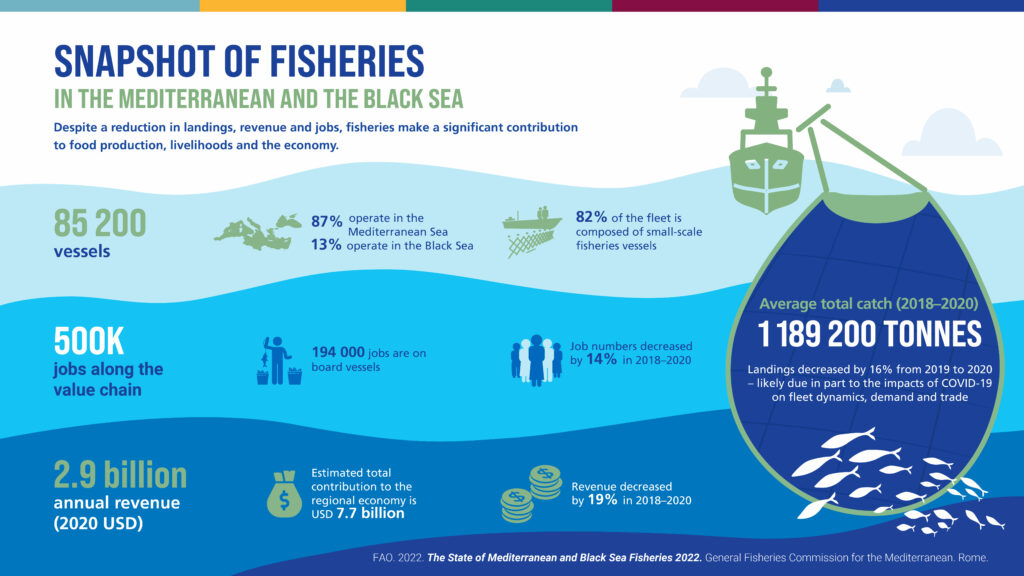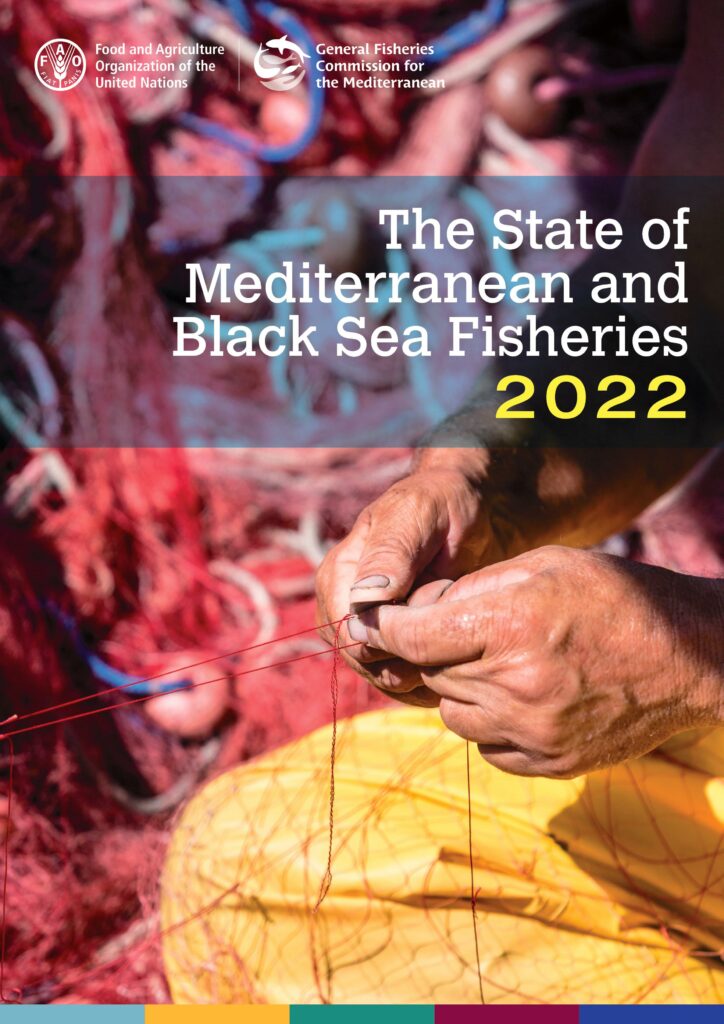The General Fisheries Commission of the Mediterranean (GFCM) of the Food and Agriculture Organization of the United Nations (FAO) published the Report on the State of the Mediterranean and Black Fisheries (SoMFI 2022) based on the work of +500 scientits and experts.
According to the report, overfishing in the Mediterranean and Black Sea has fallen significantly in the past decade, but exploitation of most commercial species is far from sustainable. The reports finds excessive exploitation has diminished in the region, particularly for key species subject to multilateral management plans. However, 73 percent of commercial species are still overfished and fishing pressure, while lower than in the past, is still double than what is considered sustainable. The biennial report found that production in the fisheries sector has fallen by around 15 percent since 2020, partly due to the COVID-19 pandemic, and so too have industry revenues and jobs.
“In the 2030 Strategy, GFCM Members have set new goals to address this issue. They know that reversing the declining trend of aquatic resources is crucial, as is linking profitability and sustainability outcomes,” said Miguel Bernal, newly appointed GFCM Executive Secretary. “The new strategy provides an ambitious vision and requires bolder collective efforts than before.”
Its release comes at a crucial time as the international community gears up to participate in the 15th Conference of the Parties to the Convention on Biological Diversity and expected to negotiate a new Global Biodiversity Framework, an opportunity to highlight the meaningful contribution of fisheries to the sustainable use and conservation of biodiversity.
SoMFi is the flagship publication of the GFCM, a FAO regional fisheries management organization. Thanks to the consolidation of quality standards in the past two years, this year’s SoMFi is the first to analyze trends in the fisheries sector at the regional level.

Sustainable fisheries require effective management
While most key commercial species are not yet exploited sustainably, nearly all of them show a decrease in fishing pressure to levels below the regional average, the report found.
Stocks of European hake in the Mediterranean, turbot in the Black Sea and common sole in the Adriatic Sea, which are under one or more management plans, showed a striking reduction in overfishing, and some of these species already revealed signs of biomass rebuilding.
The GFCM has implemented 10 multiannual fisheries management plans targeting priority stocks and involving nearly 7 000 vessels. It has also established 10 fisheries restricted areas which are helping to reduce exploitation and improve conservation of stocks and deep-sea ecosystems across more than 1.7 million square kilometres of the Mediterranean and Black Sea.
Manuel Barange, the director of FAO’s Fisheries and Aquaculture Division, said SoMFi highlighted the challenges in ensuring sustainability in this critical region.
“The Mediterranean and Black Sea are one of the most overexploited fishing regions in the world, but one where we have also seen a strong commitment in recent years to manage resources effectively,” Barange said.
“A Blue Transformation of the fisheries sector is the only way to ensure it continues to underpin food production and livelihoods for present and future generations.”
Coastal livelihoods at risk from an ageing workforce and job losses
Fisheries in the Mediterranean and Black Sea generate an annual revenue of $2.9 billion and generates an estimated half a million jobs throughout the value chain. An average 1 in every 1 000 coastal residents in the region is a fisher, and in some coastal areas that number can be up to 10 times higher.
However, the workforce is ageing. In 2020, more than half of all crew were over the age of 40, while only 10 percent were under the age of 25. According to the latest data in SoMFi this trend is worsening.
Small-scale fisheries accounts for 82 percent of the vessels and 59 percent of the jobs. It also employs the highest number of young people, but small-scale fishers earn typically less than half the wage earned by fishers on industrial fleets.
The GFCM consists of 23 member countries and its main objective is to ensure the conservation and the sustainable use of living marine resources, as well as the sustainable development of aquaculture.

